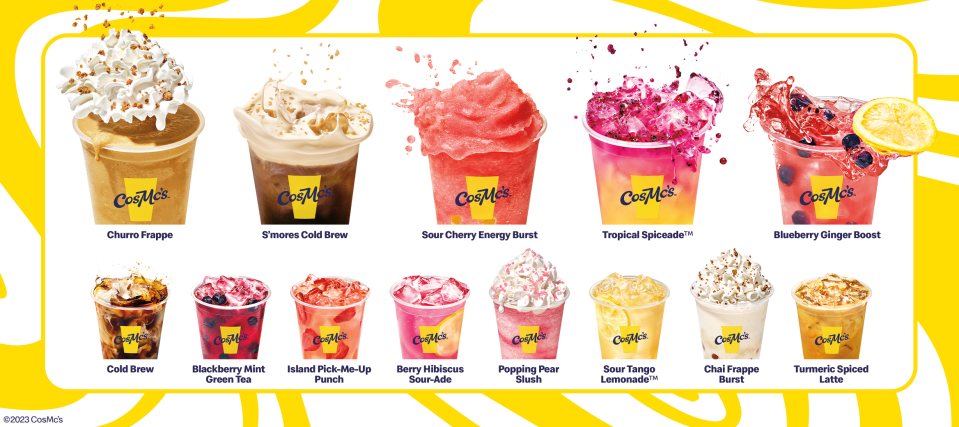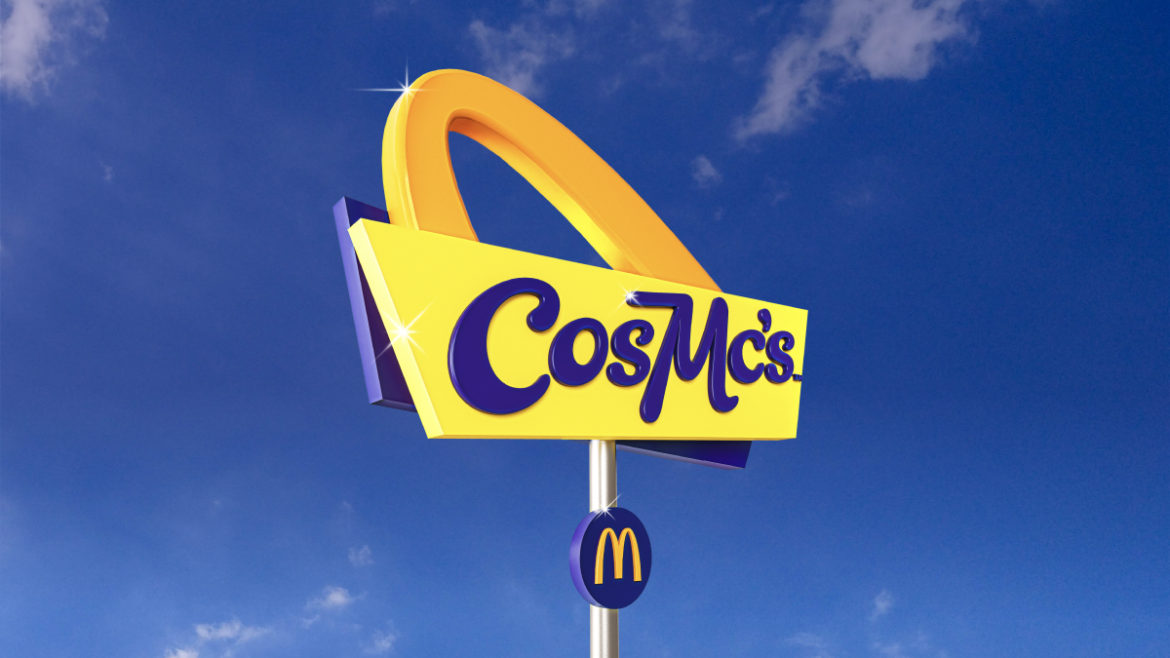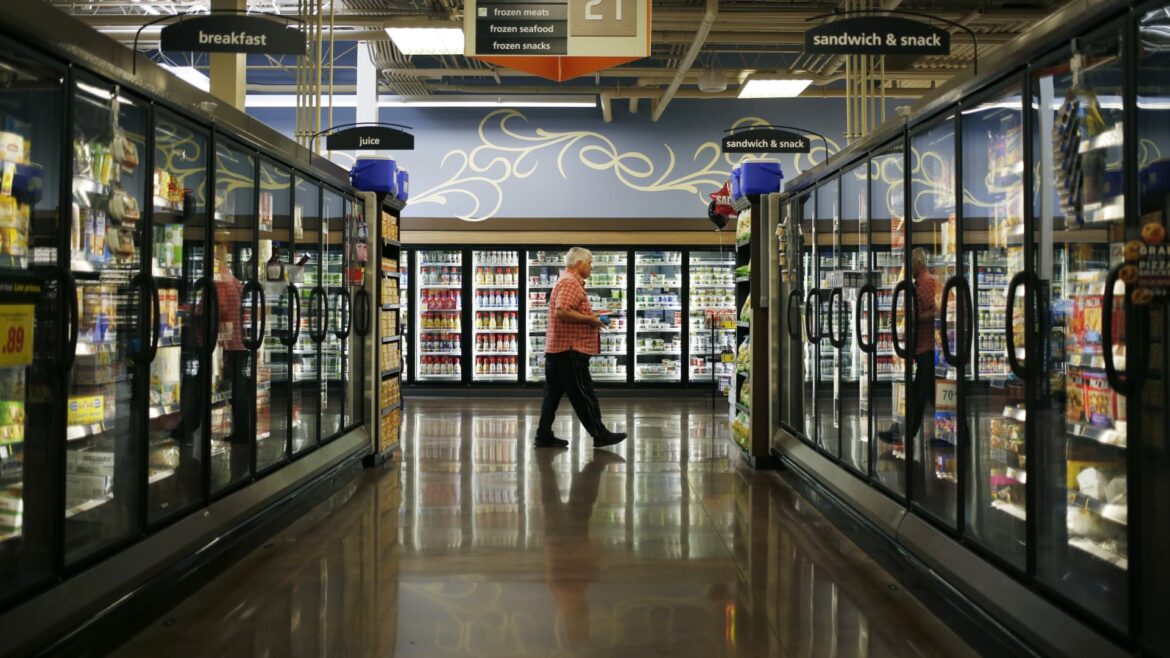 Fluidkey has announced it has opened its Optimism-based alpha to more users, allowing them to test their private solutions. Fluidkey seeks to solve the transaction privacy problem in EVM chains by leveraging ENS and stealth addresses, allowing users to use a new self-custodial asset for each payment, and segregating these movements to avoid linkability. Fluidkey […]
Fluidkey has announced it has opened its Optimism-based alpha to more users, allowing them to test their private solutions. Fluidkey seeks to solve the transaction privacy problem in EVM chains by leveraging ENS and stealth addresses, allowing users to use a new self-custodial asset for each payment, and segregating these movements to avoid linkability. Fluidkey […]
Source link
chains
Crypto saw 62 million acquired users across eight chains in 2023: Flipside report
Flipside Crypto reported that blockchain users and activity grew throughout 2023 in a report shared with CryptoSlate on Jan. 25.
The analytics company wrote:
“Crypto recently has been fluctuating through extremes, with on-chain activity and user sentiment swinging wildly throughout the last year … but ultimately, the past many months have concluded on a high note, with user growth and activity surging across nearly every major chain.”
Flipside notably observed growth in acquired users, defined as users that have carried out at least two transactions on a blockchain.
One chart in the report indicates that eight major blockchains experienced 62 million acquired users. The company noted that Ethereum (ETH) and Polygon (MATIC) saw the most user acquisitions, each with about 15 million acquired users over the year.
Bitcoin, meanwhile, saw 10.7 million acquired users over 2023. Other chains saw considerably less growth, as seen below:

Flipside noted that user acquisition peaked in May 2023 as 5.8 million users executed their second on-chain transaction on various chains.
It added that user acquisition began to rise in March alongside the collapse of Silicon Valley Bank, which may have reduced trust in centralized financial services and driven users to decentralized alternatives. Flipside added that user acquisition gradually dropped off after May before rising again in December.
It also noted specific trends for each blockchain. Flipside said that Polygon (MATIC) set a record for January by acquiring 2 million users that month. It added that Avalanche (AVAX) saw accounts surge in March to 481,000 amidst the launch of a euro stablecoin.
Furthermore, Arbitrum (ARB) and Optimism (OP) attracted hundreds of thousands of users, likely due to airdrops.
Finally, Flipside noted that Coinbase’s Layer 2 network, Base, saw a strong start with 633,000 users in the month of its launch, August 2023. However, according to the report, the chain saw lesser growth toward the end of the year.
Predicted trends for 2024
In predicting future trends, Flipside noted that 2023 saw a decline in NFT-related activity and a shift toward to decentralized finance (DeFi) activity.
As such, it suggested that the next activity cycle will similarly be dominated by various DeFi activities rather than NFT trading. Flipside suggested that decentralized exchange (DEX) trading and yield farming will continue to be predominant applications. Furthermore, it predicted the rise of new DeFi applications such as the Ethereum restaking protocol Eigenlayer.
The company said users will likely interact with multiple chains at an increased rate in 2024, though most will continue to engage with just one chain.
Flipside also predicted that users will increasingly interact with Layer 2 networks in 2024. It noted that although users who interacted with more than one chain in 2023 were a minority, those who did so largely interacted with Layer 2s.
It added that higher transaction fees during the crypto market’s next bull run could drive Layer 2 networks to lower their costs for end users competitively. This could, in turn, increase interest in related governance tokens, it said.
Finally, Flipside predicted that new chains would launch in 2024 to meet new requirements and that these could offer specialization and diverse use cases.
McDonald’s reveals locations for chain’s new spinoff restaurant and menu
Good news, McDonald’s fans: the wait to try the chain’s new spinoff, CosMc’s, will soon be over.
Announced by McDonald’s CEO and president Christopher Kempczinski during the company’s second-quarter earnings call in July, the new limited chain, titled “CosMc’s,” is described by the company as a “new small-format, beverage-led concept.”
Earlier this week, the internet got an advanced sneak peek at the menu thanks to a local who snapped a few pictures of the yet-to-open inaugural location in Bolingbrook, Illinois. McDonald’s officially released the menu for CosMc’s Wednesday, along with more information about the coming limited rollout.
Dying to get your hands on some galactic new items? We’ve got you covered. Here’s what we know about the opening so far.
McDonald’s spinoff: What we know about CosMc’s, McDonald’s nostalgic spin-off coming to some cities in 2024
What is McDonald’s new restaurant CosMc’s?

CosMc’s is a new spinoff restaurant idea from McDonald’s. Kempczinski described it as “a small format concept with all the DNA of McDonald’s but its own unique personality.”
It seems the company plans to lean into the space-based, futurism-of-the-past aesthetic associated with a mascot named CosMc character who appeared in ads in the late ’80s and early ’90s. McDonald’s has had success with the nostalgia market lately, having rolled out adult Happy Meals last year before reintroducing the Hamburglar in April and Grimace in June with a special birthday meal and a purple shake. And just last week, McDonald’s announced that is was bringing back its McNugget buddies on Dec. 11.
When does CosMc’s open?

While Kempczinski originally gave a rough timeline of early 2024 for location openings, Wednesday’s announcement said the initial location in Bolingbrook, a town about 30 miles outside Chicago, will open this month. In an email, McDonald’s told USA TODAY that eager fans can expect to see the doors open later this week.
McDonald’s plans to open approximately 10 CosMc’s pilot locations by the end of 2024.
CosMc’s locations

McDonald’s did not reveal exact locations for the rest of the rollout beyond the inaugural Bolingbrook, Illinois store. According to the announcement, patrons in the Dallas-Fort Worth and San Antonio metro areas can expect to see more locations popping up in the coming months.
What is on the CosMc’s menu?

Some fast food fans online have compared the newly released menu to that of coffee chain Dutch Bros, as it places a heavy emphasis on fanciful drinks.
The menu features teas and lemonades, coffees, slushies, frappes and signature fruit energy-style drinks called “Galactic Boosts.” Some highlights include a Turmeric Spiced Latte, S’mores Cold Brew, Churro Frappe and Sour Cherry Energy Burst.
With seven iced tea and lemonade flavors, four Galactic Boost energy drinks, 11 coffee and tea-based beverages and five frappe flavors, along with the traditional list of soft drinks and milkshakes, CosMc’s has a lot to offer those looking for something new.
The food menu is a little more limited but equally unique, featuring a Spicy Queso Sandwich, a Creamy Avocado Tomatillo Sandwich, Pretzel Bites, Savory Hash Brown Bites, a snack box and stuffed pastry bites called McPops. There are also cookies, sundaes, McFlurries, ice cream and three traditional McMuffin options.
This article originally appeared on USA TODAY: CosMc’s: McDonald’s new restaurant unveils locations, menu
Polygon co-founder Jordi Baylina says 2024 will see the amalgamation of Polygon’s various Ethereum layer-2 scaling networks to complete its “Polygon 2.0” cross-chain coordination protocol.
Speaking exclusively to Cointelegraph, Baylina said 2024 would be a litmus test to see how the Polygon ecosystem’s various networks can scale and integrate through the implementation of zero-knowledge proofs (ZK-proofs):
“2024 is going to be very much about Polygon 2.0, having all these networks connected, sharing the liquidity, sharing the composability between the network with different flavors.”
Baylina added that several networks that comprise Polygon’s ecosystem feature their own tokens, sequencers and data availability solutions. The evolution to Polygon 2.0 is set to include several upgrades that will unify these different protocols with ZK-proof technology into “continuous, unbounded blockspace.”
The scaling technology firm unveiled Polygon 2.0 in June 2023, outlining plans for a scaling ecosystem comprising four protocol layers. The staking, interop, execution and proving layers all play a role in creating an interconnected ecosystem of chains that enable fast value transfer and information sharing.
Related: Polygon co-founder: $1B bet on ZK-rollups paying off
2023 has been an important year for Polygon, as Baylina reflects, with several products shipped that have added to the performance of its scaling protocol and provide the means for developers to build decentralized applications (DApps) and interoperable services.
“This has been an incredible year for Polygon; the zero-knowledge Ethereum Virtual Machine (zkEVM) was like the first big event. Also, the creation, design and announcement of Polygon 2.0 with the proof-of-stake integration and all these aggregation layers is an important milestone,” Baylina explains.
Polygon’s zkEVM mimics the transaction execution environment of Ethereum’s mainnet. The open-source zkEVM allows DApps to scale through transaction batching, unlocking higher performance.
The release of Polygon’s chain development kit (CDK) in September 2023 dramatically opened the ecosystem to new development. Baylina previously spoke to Cointelegraph about the introduction of the service, which allows developers to launch bespoke ZK-powered layer-2 protocols on Ethereum tailored to the requirements of their project.
A key aspect is that Polygon CDK enables automatic access to liquidity across all of Polygon’s chains and the broader Ethereum ecosystem, providing “on-demand scale, without fragmenting liquidity.”

Baylina described the current state of Polygon as a “constellation with a single star being the zkEVM.” The transition of Polygon proof-of-stake to a zkEVM validium will expedite the scaling of the network and allow ecosystem protocols to become interconnected, Baylina explained.
“It is complex. It’s not an easy task. Polygon is a decentralized system. So first, there needs to be a consensus for the switch. Then comes moving all the bridges, continuing the network, and giving continuity to all these applications. This is challenging,” Baylina adds.
Polygon released three Polygon improvement proposals (PIP) in September 2023. These included a proposal for the transition and specifications that will see Polygon’s (MATIC) tokens become POL tokens, which will become the Polygon proof-of-stake protocol’s native token.
PIP-17 will include the initiation of the upgrade from MATIC to POL. This includes its transition to POL as the native gas token and staking token for the Polygon ecosystem, as well as the launch of the staking layer and migration of Polygon public chains.
Magazine: Slumdog billionaire: Incredible rags-to-riches tale of Polygon’s Sandeep Nailwal

Numerous industries are embracing the use of AI because of the technology’s transformative potential.
In the context of supply chains and logistics, many companies have been exploring AI-driven solutions to enhance their workflow efficiency and overcome the complexities involved in managing the movement of goods from companies to the end consumer.
As highlighted in a 2021 report by Gartner, a research and data insights firm, 50% of supply chain organizations are projected to invest in AI and analytics applications through 2024.
Looking at how the trend started, the need for artificial intelligence in supply chains rose sharply in 2020 following the emergence of the COVID-19 pandemic. The onset of the epidemic brought unprecedented challenges to supply chain organizations worldwide after the global health crisis disrupted economies, halted manufacturing, and led to erratic consumer behavior.
The fast-evolving situation left many supply chain operators grappling with an unprecedented level of uncertainty as long-standing conventional supply chain management models proved insufficient to cope with the scale and complexity of the disruptions.
The predicament compelled supply chain organizations across industries to seek more innovative tools and technologies. Consequently, a substantial number of them turned to AI solutions due to the advantages of the technology.
National Hot Dog Day is July 19, but here’s why you won’t find franks at many fast-food chains
Americans seemingly can’t get their fill of frankfurters, consuming an estimated 20 billion of them a year, according to the National Hot Dog and Sausage Council.
And if they need another excuse to fill up, there’s always National Hot Dog Day, which falls on July 19 and comes with assorted offers from restaurants, from 5-cent franks at participating Nathan’s locations (11 a.m. to 1 p.m. only) to free delivery of hot dogs and other menu items at Portillo’s (through July 23).
But if they’re looking to order a hot dog at some of the country’s biggest restaurant chains, such as McDonald’s or Burger King, they’ll be, um, frankly out of luck. Tube steaks may rule the day at family barbecues or at the ballpark, but they’ve never quite cut the mustard, so to speak, in the dining mainstream.
And it’s not like some of those chains haven’t tried adding hot dogs to the menu. Burger King introduced them in 2016, but despite a promise to feature the “the Whopper of hot dogs,” the menu item didn’t last. Similarly, McDonald’s offered a McHotDog at select locations over the years, but the McHotDog proved more like the McColdDog and didn’t become a fixture. (Neither Burger King nor McDonald’s responded to MarketWatch’s requests for comment.)
So, why are hot dogs such a hard sell in so many restaurants? Dining industry insiders and observers cite a multitude of factors.
Begin with this: Despite their popularity, hot dogs often get a bad rap in terms of what might be called the “mystery meat” factor.
“I think a lot of it comes down to, ‘What in earth is going into a hot dog?’” says Mark Kalinowski, a veteran fast-food industry analyst. Kalinowski adds that the fact hot dogs are a gas-station staple doesn’t exactly create a quality-oriented brand image for them, either.
Of course, some chains that do offer hot dogs will tout the quality of their ingredients. Nathan’s, perhaps the most iconic name in hot dogs with a history going back to 1916 (and let’s not forget its hot-dog eating competition, either), notes that its franks are all-beef and made with a secret recipe of spices. But Nathan’s marketing vice president Phil McCann also makes it clear that preparing a hot dog can take considerably more time and effort than preparing a hamburger (and yes, Nathan’s also sells burgers). In turn, that may explain why the major chains have shied away from hot dogs — at least as of late.
After all, a burger requires just a single flip of the patty during the grilling. But a hot dog — at least one that’s not made on a basic roller-style grill like you see in gas stations — requires a fair bit of moving around to make sure all the surfaces get the necessary attention and the meat has that perfect “snap” to it.
“It has to be staged accordingly,” says McCann.
Burgers also lend themselves to a great deal of tinkering, say culinary pros. There are countless choices to be made in terms of the meat, the bun and the toppings — to the point that the companion South Beach and New York City Food & Wine Festivals, both among the biggest culinary events in the country, have built their reputations in part on their Burger Bash competitions.
While there’s room for variations with hot dogs — and certainly some regional differences (think the fully loaded Chicago-style dog) — some argue that hot dogs just can’t compete in the creativity department.
“You can only do so much,” says Ed Cotton, chef and partner at Jack & Charlie’s No. 118, a New York City restaurant. Naturally, Cotton has a burger on his menu — a high-end bacon cheeseburger priced at $27. He says he considered offering an “elevated” hot dog, but ultimately nixed the idea.

The Original Hot Dog Factory, an Atlanta-based chain, offers everything from a Street Polish Dog to a Hawaiian Dog on its menu.
The Original Hot Dog Factory
Still, others say the hot dog is due for its day.
Among those frank fanatics: Dennis McKinley, owner of the Original Hot Dog Factory, an Atlanta-based chain with 14 locations across the country.
McKinley has made hot dogs in every conceivable style his calling card, from a Street Polish Dog (Polish sausage with grilled onions, mustard and sport peppers) to a Hawaiian Dog (beef hot dog with bacon, cheese, grilled onions and grilled pineapple). He says demand is growing such that he anticipates having 30 locations by 2025.
But to achieve even greater growth, McKinley is hoping that the major fast-food chains will also come to embrace the hot dog and boost its overall profile — a kind of rising-tide-raises-all-franks way of looking at the dining scene.
“I think we need to shed some light on the best sandwich in America, which is the hot dog,” McKinley says.
Americans love frozen food.
Virtually all American households purchase frozen food at least once a year, but without resilient cold storage supply chain infrastructure, the growth and safety of the massive $265 billion global frozen food market may be put at risk.
“Consumers are buying more frozen products. It’s going to require more storage capability and a more efficient supply chain,” Brian Choi, CEO and managing partner of The Food Institute, told CNBC.
In 2022, frozen food sales in the U.S. reached more than $72 billion, according to the American Frozen Food Institute.
“We’re seeing that growth continue,” Alison Bodor, CEO of the American Frozen Food Institute, told CNBC.
During the coronavirus lockdowns in 2020, frozen food sales reached more than $65 billion, according to the institute.
“The pandemic taught consumers to invest in bulk buying,” Sonia Punwani, chief marketing officer of Cargill Protein North America, told CNBC. “Frozen foods were some of the bestselling items during the pandemic since they can be really stored for long periods of time.”
There’s a sophisticated supply chain keeping perishables frozen. Products have to maintain proper temperature throughout a complex network of refrigerated trucks and cold storage facilities.
Approximately 13% of all food produced globally is lost due to poor cold storage supply chains every year, according to a study from Columbia University’s Climate School.
“In the world of cooling refrigeration, we’re still depending upon a more than century-old mechanical incumbent,” Tony Atti, CEO of Phononic, a solid-state cooling company, told CNBC.
Phononic aims to minimize food waste. One of its products is a temp-sensitive refrigerator tote that allows shippers to spend less getting food to e-grocers and grocery stores. Phononic is one of CNBC’s 2023 Disruptor 50 companies, marking its fourth time on the annual list.
Also on CNBC’s 2023 Disruptor 50 list is Lineage Logistics, a company on a mission to make the food supply chain more efficient.
“We’re helping to move food through the entire cold chain and ensuring that it keeps a safe temperature the entire way,” said Jeff Rivera, COO of Lineage Logistics.
The Michigan-based company has grown to more than 430 locations across 20 countries, offering a global network of temperature-controlled cold storage facilities for food products and several facilities “blast freeze” millions of pounds of product a day with warehouse racks specifically designed for efficiency.
Watch the video above to learn more about the influence of frozen food, the global cold storage supply chain infrastructure, what it takes to freeze food products and what’s next for this growing section of the grocery store.







